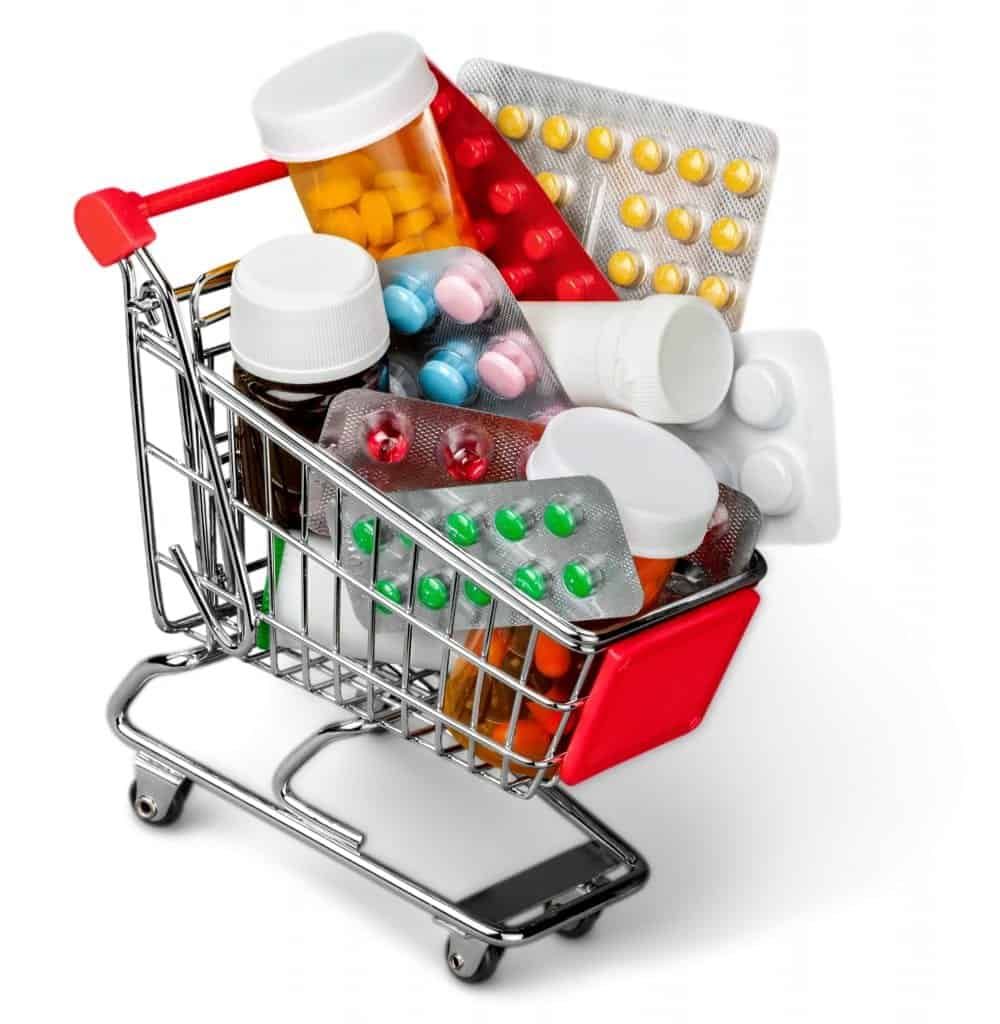“I have absolutely no pleasure in the stimulants in which I sometimes so madly indulge. It has not been in the pursuit of pleasure… It has been a desperate attempt to escape.”
~ Edgar Allan Poe
It is no secret that stimulants can not only keep you alert but also get you high. This is why it is important to know how stimulants work, why they are addictive, and how you can stop the cycle of dependence on speed drugs. Unfortunately, many people become dependent on speed drugs. The basis of speed is amphetamine, a potent stimulant drug. This explains why stimulant highs keep you alert. It also explains why people become dependent on stimulants. Speed drugs are nothing new, but that does not mean that they are not dangerous.
The Connection Between Stimulants & Addiction
Amphetamine and other stimulants have gone a long way toward treating ADHD, narcolepsy and other conditions – but they have also gone a long way toward getting people addicted to the stimulant effects of the drug. The main danger in using speed or other stimulants is the possibility of addiction. If you or someone you love is dependent on stimulant highs, we are here to talk about how to stop the cycle of addiction.
Stimulants Definition: What is Speed?
As the name implies, stimulants are a class of drug that stimulates the nervous system to achieve a specific response. Illegal stimulants include methamphetamine, cocaine, and MDMA (sometimes called ecstasy). Another word for street-level methamphetamine is speed. Technically, speed refers specifically to amphetamine sulfate. However, people usually use the word speed to refer to any kind of amphetamine – prescription or otherwise. Prescription stimulants are most commonly used to treat ADHD and narcolepsy. Because individuals with ADHD have difficulty concentrating on specific stimuli, prescription amphetamines (like Adderall) help them concentrate on what they are supposed to be focusing on. In the same way, the stimulant effects of the drug help people with narcolepsy stay awake.
What Drugs Are Considered Stimulants – and Speed?
Examples of stimulants include any of the following types of substances:
- Cocaine
- Crack-cocaine
- Methamphetamine
- Methylenedioxymethamphetamine (MDMA)
- Amphetamine
- Methylphenidate
- Caffeine, Coca, and Nicotine
“Prescription stimulants have a calming and focusing effect on individuals with ADHD. Treatment of ADHD with stimulants, often in conjunction with psychotherapy, helps to improve ADHD symptoms along with the patient’s self-esteem, thinking ability, and social and family interactions.”
~ National Institute on Drug Abuse
This stimulant drugs list shows that there is a wide range of stimulants. Some are legal prescription drugs, while others are dangerous illegal substances. As a class, a stimulant’s definition can refer to anything from crystal meth to cocaine. The major difference between amphetamines and others on the stimulant drugs list is that amphetamines are slower acting than their counterparts – at least when they are taken as prescribed. 
What to Look For: A Partial Prescription Stimulant Drugs List
Even though recreational methamphetamine – known as speed – is not the same thing as a prescription stimulant, the two drugs are often treated interchangeably. This is because prescription stimulants like Adderall have the same effect as illegal stimulants like speed. These are sometimes sold illegally as speed and abused by those who buy the pills.
- Adderall: This is the most popular option for treating ADHD – it is also commonly abused either to improve cognitive functioning or to reach a stimulant high.
- Dexedrine: Also used to treat ADHD, Dexedrine is not as common as Adderall. However, it still uses amphetamine as the active ingredient and can be abused for a high.
- Concerta: Considered highly addictive by many experts, Concerta has a similar makeup as cocaine and amphetamine. Using this drug outside of how it is prescribed can lead to a stimulant high and drug dependence.
- Ritalin: This is not as commonly abused, because it is methylphenidate rather than an amphetamine.
- Desoxyn: Prescribed for ADHD, Desoxyn is essentially prescription-strength methamphetamine. Because of this, the drug should be used with extreme caution – particularly if you have a history of drug abuse.
How Stimulant Highs Keep You Alert
As the name implies, stimulants work by stimulating the central nervous system. The result is to increase alertness and, in some cases, cognitive function. Depending on the drug or the intended purpose, stimulant drugs can be taken orally (as pills), snorted (as a powder), or injected (as a liquid). Stimulants – including speed drugs – make you alert by increase the level of dopamine in the brain. Dopamine is connected with three specific functions of the brain: movement, attention, and pleasure. This is why amphetamine is prescribed to treat ADHD – it is also why speed is sold as a means of getting high. When taken as prescribed, stimulants slowly increase the dopamine levels in the brain. This helps keep individuals with ADHD alert and focused.
How Stimulants Outside a Prescription Are Dangerous
However, when stimulants are taken in any other way than how they are prescribed, the dopamine levels in the brain increase rapidly and dramatically. This not only keeps the user alert but also results in an amphetamine high. When abusing stimulants, the stimulant effects of the drug come on rapidly. Abuse of amphetamines includes taking illegal speed or snorting and injecting prescription stimulants. At this point, both speed and prescription amphetamine have the same effect: they get you high. This is also when the cycle of dependence on speed drugs begins. 
Breaking the Myth: Stimulants Do Not Make You Smarter
It is worth noting here that there is no focusing effect of stimulant drugs for those who do not have ADHD. Some people do not take speed to get high, but they will take a prescription medication like Adderall in an attempt to focus on their work or their studies. Simply put, this doesn’t work. The cognitive impact of amphetamines has been shown again and again to only apply to those with ADHD. According to the National Institute on Drug Abuse, prescription stimulants do promote wakefulness, but they do very little to enhance learning or thinking in people who have not been diagnosed with ADHD. With that in mind, let’s turn to how prescription stimulants and speed can be abused – including their danger and how to stop the cycle of getting high on speed.
The Danger of Stimulant Drugs
The danger in stimulants begins when prescription stimulants are taken in ways other than how they are prescribed. This danger is also found in using speed – the street name for amphetamine sulphate. There is no medical purpose for speed; this form of the drug is used only for illicit, recreational purposes.
“Because they may produce euphoria, these drugs are frequently abused for recreational purposes – to get high. Euphoria from stimulants is generally produced when pills are crushed and then snorted or mixed with water and injected.”
~ The National Institute on Drug Abuse
Stimulant drugs should never be taken without a prescription, or in a way that does not match the description. 
Using Speed and Abusing Stimulants
Unfortunately, drug abuse is relatively common in the United States. While most people become dependent on opioids (like prescription painkillers), speed and amphetamines are also addictive. The first step down the road to drug dependence is drug abuse. Examples of stimulants abuse include any of the following:
- Using illegal stimulants (like speed)
- Crushing and snorting prescription amphetamines
- Injecting prescription amphetamines
- Using amphetamines (like Adderall or Ritalin) without a prescription
- Taking the stimulant drug in larger doses or more often than prescribed
These examples of stimulants abuse highlight the danger of the drug. Stimulant effects are only positive in specific situations – a person with ADHD and with a prescription, for instance. Otherwise, stimulants’ side effects can overwhelm both the physical and mental health of the drug user. In short, the danger of speed drugs is both the possibility of addiction and the side effects associated with prescription stimulants and speed drugs.
Stimulant Drugs and Substance Addiction
The major concern in using all types of stimulants – from speed drugs to cocaine – is the risk of addiction. One of the long-term effects of stimulants – especially when stimulant drugs are abused – is the development of drug dependence. This is when your body becomes physically dependent on the stimulant effects discussed above. Determining speed drug dependence is dependent on knowing the symptoms of addiction to look for.
Symptoms of Drug Dependence & Addiction
These are some of the symptoms that you may be dependent on speed drugs or other stimulants:
- Unexplained paranoia or hostility toward others
- Increased aggressiveness
- Lowered social inhibitions
- Changed sexual behavior
- Malnutrition
- Experiencing withdrawal symptoms
- Hallucinations or convulsions
Out of all of these, the best way to tell whether or not drug dependence is present is withdrawal symptoms. Withdrawal occurs after going several hours without experiencing the stimulant effects of speed. Some of the most common withdrawal symptoms from stimulants include sleep problems, depression, fatigue, and even losing the ability to feel pleasure. Clearly, the danger of becoming dependent on the effects of speed drugs outweighs the potential of getting high. 
The Side Effects and Long-Term Effects of Stimulants
Becoming dependent on speed drugs is not the only impact to be concerned with. All kinds of stimulant drugs – from cocaine to prescription drugs like Adderall – have side effects associated with their use. Some of the most common stimulants side effects include:
- Dry mouth
- Sweating
- Nausea or vomiting
- Headache
- Blurred vision
- Difficulty sleeping
- Anxiety or depression
- Dizziness
When speed drugs – or other kinds of stimulants – are taken in large doses, these side effects can turn more serious.
High Doses and the Long-Term Impact of Stimulant Abuse
An irregular heartbeat confused thinking, and even unconsciousness are not uncommon stimulant’s side effects when the drug is taken in high doses.
“Stimulants can increase blood pressure, heart rate, and body temperature and decrease sleep and appetite. When they are abused, they can lead to malnutrition and its consequences. Repeated abuse of stimulants can lead to feelings of hostility and paranoia. At high doses, they can lead to serious cardiovascular complications, including stroke.”
~ National Institute on Drug Abuse
In addition to these side effects, all types of stimulants – and especially illegal stimulants like speed – can have a long-term impact. As the National Institute on Drug Abuse points out, abusing stimulants like speed over a long period of time can lead to additional psychiatric problems. Anxiety, depression and even suicidal thoughts are not uncommon.
How to Stop the Cycle of Stimulant Drug Dependence
Despite the danger of dependence, overcoming stimulant addiction is far from impossible. It is possible to stop the cycle of stimulant drug dependence, even after it has begun. Once you recognize long-term effects of stimulants and the danger of addiction, it is time to take the next steps toward recovery. Consider some of the following steps as your starting point.
- Admit the Problem The first step to overcoming any kind of addiction – including the negative effects of stimulants – is to admit that you have a problem with drugs. Acknowledging that speed or amphetamine has taken over will put you on the right path to recovery. It is only up to you.
- Ask for Help It can be difficult to overcome the draw of all types of stimulants without some outside help. While admitting the problem is up to you, it is important to reach out to others to help you through the rest of the process. Friends, family, and professional addiction treatment centers are all extremely helpful in breaking the cycle of drug dependence.
- Make a Goal Having a specific goal in mind when you begin recovery can help you keep yourself accountable – especially in the early days of becoming sober. Asking others to keep you accountable to this goal will only make it more attainable. Focus not only on overcoming your drug dependence but on self-improvement as a whole as well.

The Hope of Speed Drug Addiction Treatment
If you think that you or someone you love has become addicted to illegal stimulants or to prescription stimulants, it is important that you get professional help. No matter how many times you have experienced a speed drug high, and no matter where you are in the cycle, hope is not out of reach. If you have more questions about what it means to be addicted to speed and what treatment options are available for stopping the cycle of stimulant drug dependence, feel free to contact us today.

